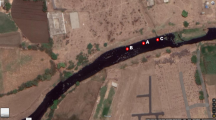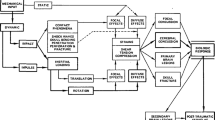Abstract
Injury information for vehicle occupants from the body regions of the head, thorax, abdomen, and upper and lower extremities, due to the restraints and interior parts of the vehicle, were extracted from the 2009 ~ 2012 NASS/CDS database. For those cases with high occurrence frequency, a detailed and comprehensive data analysis was performed to find the relationship between the accident, occupant, vehicle, and injury data. A numerical frontal impact sled model with the Hybrid III dummy and the GHBMC human body model was constructed to simulate and identify those injury risks according to NASS/CDS. Among the 5,734 injuries to the aforementioned body regions from frontal crashes are, listed by frequency of occurrence, the lower extremity (27.8 %), upper extremity (21.3 %), thorax (15.1 %), face (10.9 %), spine (8.7 %), head (7.3 %), and abdomen (6.9 %). The main injury sources to the head were the windshield, side structure, and steering wheel. For the thorax and abdomen they were the seat belt and steering wheel. For the lower extremity it was the instrument panel. The main injury patterns for the head were the concussion and the contusion. For the thorax they were vessel laceration and lung contusion. For the abdomen they were laceration and contusion of the organs. For the lower extremity they were bone fracture and ligament rupture. The steering wheel and seat positions were main factors affecting head and thorax injury risks. From the sled impact simulation, high injury risks of the head and thorax were assessed respectively at conditions of steering column tilt down and rear most seat position, which correlated well with the findings from the NASS/CDS data analysis.
Similar content being viewed by others
References
Barnes, J. S., Morris, A. P., Fildes, B. and Newstead, S. (2001). Airbag effectiveness in real world crashes. ARSRPE Conf.
Bostrom, O. and Kruse, D. (2011). A sled test method for small overlap crashes and fatal head injuries. 22nd Enhanced Safety of Vehicle Conf., Washington DC, USA.
Cuerden, R., Hill, J., Kirk, A. and Mackay, M. (2001). The potential effectiveness of adaptive restraints. Proc. IRCOBI Conf., Isle of Man.
Davis, R. P., McGwin, G. Jr., Melton, S. M., Reiff, D. A., Whitley, D. and Rue, L. W. (2004). Specific occupant and collision characteristics are associated with motor vehicle collision-related blunt cerebrovascular artery injury. J. Trauma-Injury Infection & Critical Care 56, 1, 64–67.
Duma, S. M. and Jernigan, M. V. (2003). The effects of airbags on orbital fracture patterns in frontal automobile crashes. Ophthalmic Plastic and Reconstructive Surgery 19, 2, 107–111.
Frampton, R. J., Welsh, R., Kirk, A. and Fay, P. (2000). Effectiveness of airbag restraints in frontal crashes–What european field studies tell us. Proc. IRCOBI Conf., Montpellier, France.
Han, M. Y., Kim, J. H., Choi, H. Y., Oh, C. J. and Bae, J. H. (2014). Real world in-depth crash accident database: Part 1 analysis of airbag undeployment cases. Korean Auto-Vehicle Safety Association Autumn Conf.
Huber, C. D., Lee, J. B., Yang, K. H. and King, A. I. (2005). Head injuries in airbag-equipped motor vehicles with special emphasis on AIS 1 and 2 facial and loss of consciousness injuries. Traffic Injury Prevention 6, 2, 170–174.
Murphy, R. X. Jr., Birmingham, K. L., Okunski, W. J. and Wasser, T. (2000). The influence of airbag and restraining devices on the patterns of facial trauma in motor vehicle collisions. Plastic and Reconstructive Surgery 105, 2, 516–520.
Pintar, F. A., Yoganandan, N. and Gennarelli, T. A. (2000). Airbag effectiveness on brain trauma in frontal crashes. 44th AAAM Annual Conf.
Untaroiu, C., Bose, D., Lu, Y.-C., Riley, P., Lessley, D. and Sochor, M. (2011). Abdominal and thoracic response to loading of pretensioner restraint systems. Proc. IRCOBI Conf., Krakow, Poland.
Wallis, L. A. and Greaves, I. (2002). Injuries associated with airbag deployment. Emergency Medicine Journal, 19, 490–493.
Yue, N. and Untaroiu, C. (2014). A numerical investigation on the variation in hip injury tolerance with occupant posture during frontal collisions. Traffic Injury Prevention 15, 5, 513–522.
Author information
Authors and Affiliations
Corresponding author
Rights and permissions
About this article
Cite this article
Choi, H.Y., Shin, J., Oh, C.J. et al. Occupant injury risk analysis at NASS/CDS database. Int.J Automot. Technol. 18, 851–860 (2017). https://doi.org/10.1007/s12239-017-0083-8
Received:
Revised:
Accepted:
Published:
Issue Date:
DOI: https://doi.org/10.1007/s12239-017-0083-8




